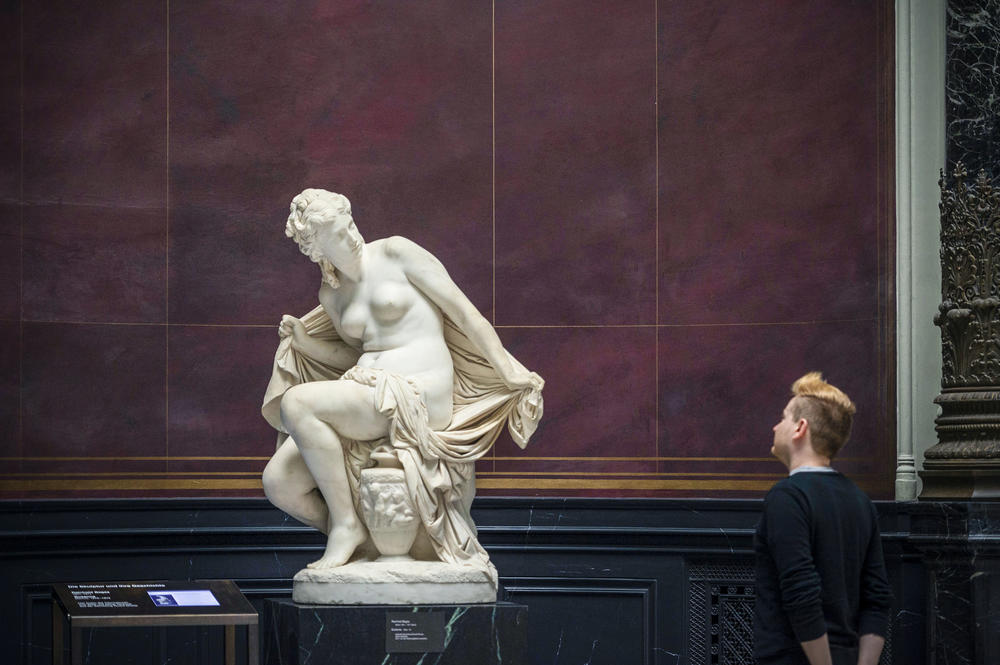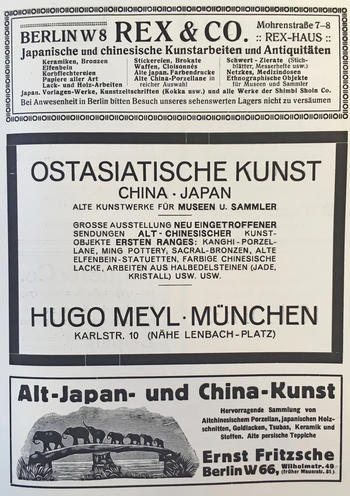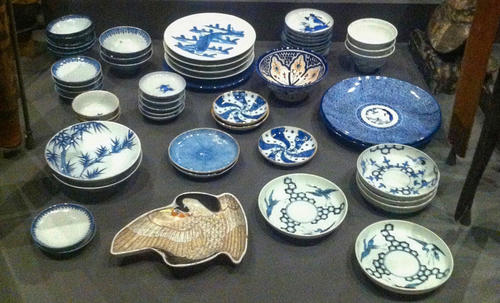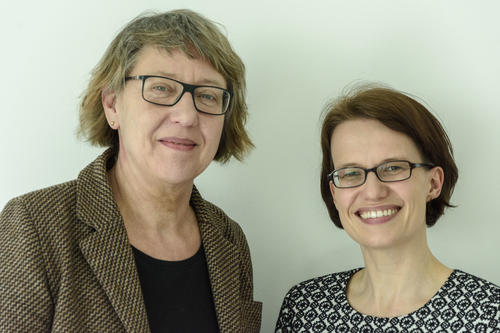Collecting Clues Together
Students at Berlin universities can learn about provenance research. A new flyer presents the entire range of courses available.
Apr 09, 2019
The figure “Susanna” by sculptor Reinhold Begas is in the Alte Nationalgalerie Berlin. It was part of the art collection of the German-Jewish publisher Rudolf Mosse.
Image Credit: Bernd Wannenmacher
Provenance research is flourishing in Berlin. To guide students in finding out what courses are available, art historian Meike Hoffmann at Freie Universität Berlin and historian Christine Howald at Technische Universität Berlin compiled a flyer. It lists the seminars and lecture series on provenance research offered by Freie Universität Berlin, Technische Universität Berlin, and Humboldt-Universität zu Berlin – partners in the Berlin University Alliance. It also includes the Hochschule für Wirtschaft und Technik’s offer on the subject. The wide range of courses – from “Objectives and Methods of Provenance Research” and “Art and Law” to “The Natural History Museum, its Spirits and Monsters” – forms something of an ideal degree program that crosses boundaries between the institutions. The flyer has just recently been updated.
Typical advertisements of leading German East Asian dealers in the “East Asian Journal” from the year 1912.
Image Credit: Christine Howald
The two scholars see this compilation of courses as the basis for increased cooperation in this field between the universities in the future. “We want to develop an internationally oriented degree program that harnesses expertise at the individual institutions,” says Christine Howald from Technische Universität Berlin. Her main area of expertise is Chinese, Japanese, and Korean art – so-called East Asian art – on the Western art market in the 19th and 20th centuries. Dr. Howald established and now manages the research area TEAA - Tracing East Asian Art at Technische Universität Berlin.
“We think an ideal degree program in provenance research would draw on the courses offered at the different institutions and experts from different disciplines working in this field,” explains Meike Hoffmann, who has been a researcher at the “Degenerate Art” Research Center at Freie Universität for more than ten years.
She currently heads the cross-institutional Mosse Art Research Initiative (MARI), a research project with the aim of reconstructing the whereabouts of Berlin publisher and patron of the arts Rudolf Mosse’s extensive collection, which once consisted of some 4,000 pieces. It is the first public-private partnership in provenance research in which German institutions cooperate with descendants of victims of racial persecution during the Nazi regime.
In recent years Freie Universität has developed a focus on art under National Socialism and the history of collections in general – due also in large part to the work of Meike Hoffmann, who was commissioned by the German public prosecutor in 2012 for an expert opinion in the “Gurlitt case.” At Technische Universität Berlin, there is a focus on art market research and non-European art , which coincides with TEAA – Tracing East Asian Art in Christine Howald’s department there.
Last year, Bénédicte Savoy, head of the Chair for Modern Art History at Technische Universität, together with the Senegalese researcher and author Felwine Sarr wrote a report commissioned by French President Emmanuel Macron on the restitution of African cultural heritage.
At Humboldt-Universität, researchers at the Centre for Anthropological Research on Museums and Heritage study, among other things, the history and origin of objects in ethnographic and natural history collections. The Hochschule für Technik und Wirtschaft, which offers a bachelor’s degree program on museology, was also included in the provenance research network.
Meike Hoffmann and Christine Howald view the diversity provenance research in Berlin as a major advantage. As Dr. Hoffmann emphasizes, this new field of work, whose methodology is still being developed, depends so much on networking, and exchange is crucial to follow the interlaced paths that works of art and other objects have often taken. Dr Howard adds, “We have to stay in constant dialogue if we want to see any results at all.”
For example, when it comes to classifying dealer or collector brands on objects, restitution issues, or the conversion of old currencies – many questions can only be solved with the expertise of colleagues and by using the methodological tools of other subjects. In the courses, art history students also get to know experts from archeology, history, and law. Museum curators are also involved.
Art historian Meike Hoffmann (at left) at Freie Universität and historian Christine Howald (at right) at Technische Universität are planning a cross-university degree program in provenance research.
Image Credit: Nina Diezemann
Meike Hoffmann says it is particularly important to familiarize oneself with archive work, since a piece or the etiology of a collection often leaves traces in files, lists, meeting minutes, letters, and notes.
For example, the commercial register found in the Berlin State Archives provides information on sales in the art trade, and the records of the “Oberfinanzpräsidien,” the regional tax offices during the Nazi regime, document the household effects left behind and the remaining assets of the German Jews who were deported and murdered in the concentration camps. Both archives are indispensable for researching the origins of works from the period of National Socialism. The Political Archive of the German Federal Foreign Office and the Prussian Secret State Archives contain original source material on colonial history.
The courses also give students an opportunity to contribute to research. In the Mosse Art Research Initiative, for example, students help to systematically work through certain files, according to Hoffmann. Researchers then carry out the in-depth work. In one of Howald’s seminars, students were able to reconstruct previously unknown histories of objects, at the Museum of Asian Art.
“We interpret works and sources – but the data often tell a different story.” Christine Howald
Digital techniques are becoming increasingly important for this detective work, and not only because knowledge is now accessible to other researchers via databases such as those currently being used in the Mosse Art Research Initiative. Computer programs support the identification of works of art, for example by examining historical photographs. Computers are also supposed to help in the exploration of “multiples,” says Christine Howald, explaining that when it comes to East Asian objects, it was often the case that several identical pieces were produced. “We interpret works and sources – but the data often tell a different story,” she says.
Work in this field often ignites political debate, for example, when artworks are restituted because their original owners had to sell them to art dealers at extremely low prices, as with Hildebrand Gurlitt under National Socialism, or when entire collections are to be returned to their countries of origin, as Bénédicte Savoy and Felwine Sarr demand in their report. Howald also expects to encounter restitution claims from China for East Asian art. How do the researchers address these issues in their seminars?
“The students often come to the courses very motivated and want to make amends.” Meike Hoffmann
The students often come to the courses very motivated and want to “make amends,” Meike Hoffmann says. This emotional attitude is not, however, always helpful for research, she believes. And so controversial debates, the often imprecise reporting in the media, or the interests of the various actors in this field are always topics in the courses – this also enables students to develop a position of their own, says Christine Howald. Anthropologists can teach us a lot about this, she adds
For the two researchers, the fact that provenance research is not only a challenge for museums in Germany but also worldwide creates an opportunity to expand educational offers in Berlin with its plethora of museums, archives, and universities.
“We cover the widest field here – something that is not possible in other cities,” says Meike Hoffmann. However, even if students can receive credit for their coursework at other institutions, the degree regulations and requirements differ from one university to the next.
This could become easier within the Berlin University Alliance. And perhaps others around the globe who are interested can then study provenance research in English at several universities. Because after all, Meike Hoffmann and Christine Howald’s main goal is the creation of “a joint program in provenance research for Berlin.”
Provenance Research in Berlin
“Degenerate Art” Research Center (Freie Univerisität Berlin)
MARI-Mosse Art Resarch Initiative (Freie Univerisität Berlin)
TEAA - Tracing East Asian Art (Technische Universität Berlin)
Art History as Cultural History (Technische Universität Berlin)
CARMAH - Centre for Anthropological Research on Museums and Heritage (Humboldt-Universität zu Berlin)
Museum Studies (Hochschule für Technik und Wirtschaft Berlin)




